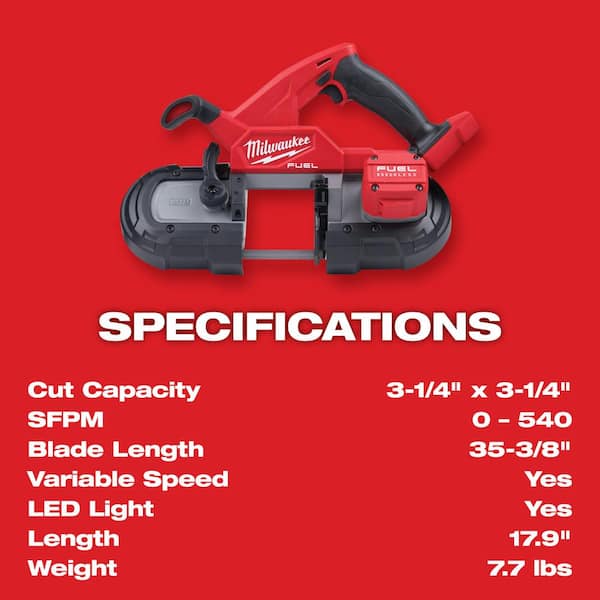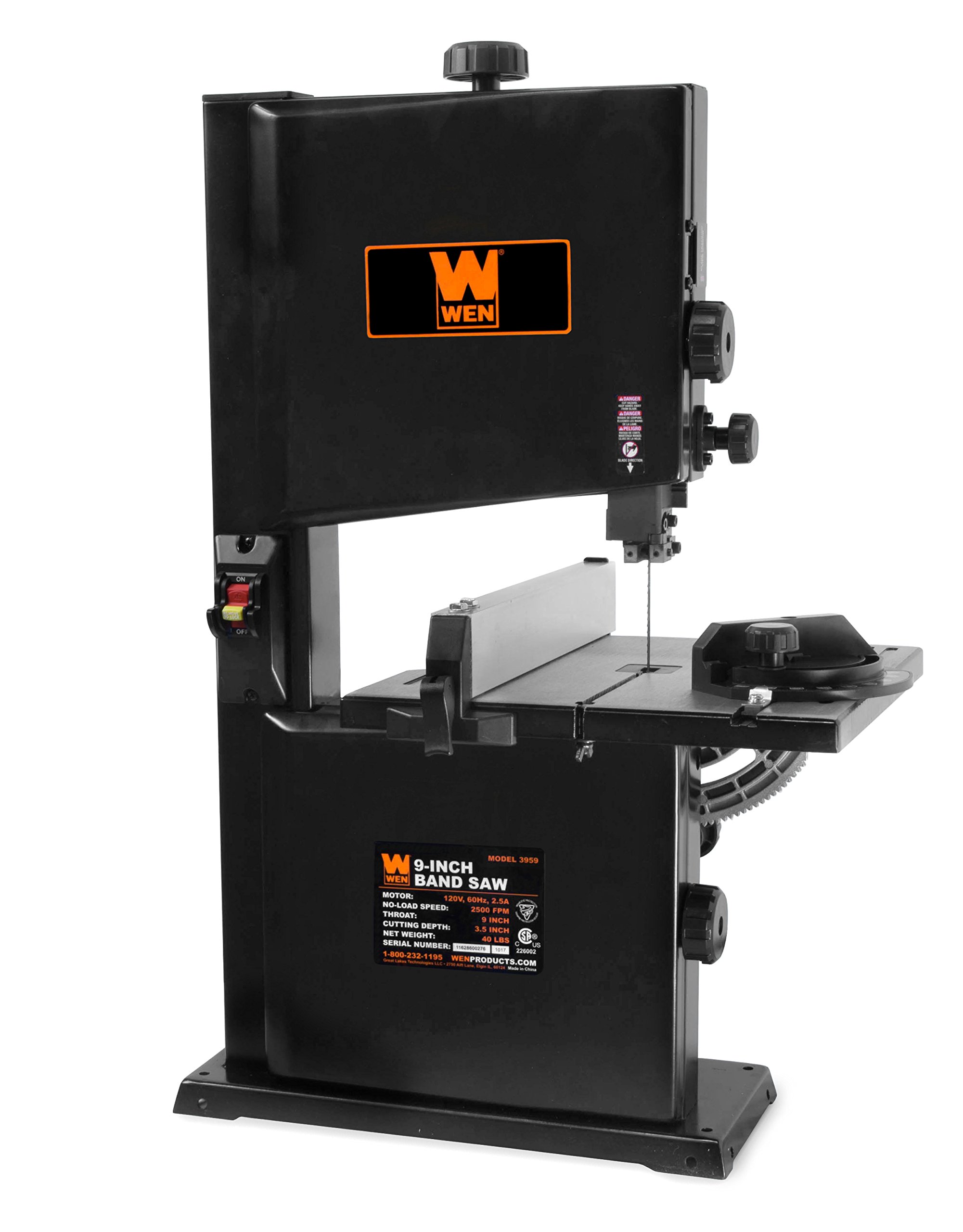Are you curious about the weight of a band saw? Wonder no more! In this article, we’ll uncover the answer to the burning question: How much does a band saw weigh? So, buckle up and let’s dive into the world of band saws!
If you’re a woodworking enthusiast, a DIY guru, or just someone interested in tools, knowing the weight of a band saw is crucial. Whether you’re moving it around your workshop or planning its transportation, understanding its weight can make all the difference. So, let’s get ready to unveil this fascinating piece of information! Stick with me, and you’ll be an expert in no time.
In this beginner-friendly article, we’ll explore the factors that affect a band saw’s weight and provide you with insightful details that will help in your woodworking adventures. So, brace yourself, my friend, because this journey is about to begin! Let’s explore how much a band saw weighs together.

How Much Does a Band Saw Weigh?
A band saw is a versatile tool used in woodworking and metalworking projects. It is known for its ability to make straight and curved cuts with precision and efficiency. If you’re considering purchasing a band saw, it’s important to understand its weight and how it may impact your work. In this article, we will explore the factors that determine the weight of a band saw and provide you with valuable information to help you make an informed decision.
Factors Influencing the Weight of a Band Saw
Before we dive into the specific weights of different band saw models, let’s first understand the factors that contribute to their overall weight. Here are some key factors:
1. Frame and Body Construction
The frame and body construction of a band saw play a significant role in determining its weight. Band saws can have frames made of cast iron, steel, or aluminum, each with varying weights. Cast iron frames tend to be the heaviest, providing stability and reduced vibration during operation, but they may be more challenging to move around. Steel frames are durable and moderately heavy, while aluminum frames are lightweight and easier to transport but may sacrifice some stability.
2. Motor Size and Type
Another factor that affects the weight of a band saw is the size and type of motor it utilizes. Larger motors, such as those with higher horsepower ratings, tend to weigh more due to their increased power output. Additionally, the type of motor, whether it’s an induction motor or a brushless DC motor, can also impact the weight. Induction motors are generally heavier but provide more torque, while brushless DC motors are lighter and offer improved efficiency.
3. Table Size and Material
The size and material of the table on a band saw can have a significant impact on its weight. Band saw tables are typically made of cast iron or aluminum. Cast iron tables are heavier and help dampen vibrations during cutting, providing a stable work surface. However, they can add to the overall weight of the saw. On the other hand, band saws with aluminum tables are lighter and more portable but may not offer the same level of stability as cast iron tables.
Weight Ranges of Different Band Saw Models
Now that we understand the factors influencing the weight of a band saw, let’s explore the weight ranges of different band saw models to give you a better idea of what to expect:
1. Benchtop Band Saws
Benchtop band saws are compact and designed to be placed on a workbench or stand. Their weight typically ranges from 50 to 100 pounds (22 to 45 kilograms). These band saws are portable and suitable for light to medium-duty cutting tasks. They are ideal for hobbyists and homeowners with limited space.
2. Floor-Standing Band Saws
Floor-standing band saws are larger and more robust, designed for heavy-duty cutting tasks in professional workshops. Their weight commonly ranges from 150 to 500 pounds (68 to 227 kilograms). These band saws offer increased stability and cutting capacity, making them suitable for professional woodworkers, metalworkers, and craftsmen.
3. Portable Band Saws
Portable band saws are handheld tools that allow for cutting materials in various locations. They are lightweight and typically weigh around 10 to 15 pounds (4.5 to 6.8 kilograms). These band saws are favored by electricians, plumbers, and contractors who need a versatile cutting tool that can be easily transported to job sites.
Key Takeaways: How Much Does a Band Saw Weigh?
- A band saw typically weighs between 100 and 500 pounds.
- The weight of a band saw depends on its size and construction.
- Smaller band saws designed for hobbyists and home use are generally lighter, around 100 to 300 pounds.
- Industrial-grade band saws used in professional woodworking shops can weigh up to 500 pounds or more.
- It’s important to consider the weight of a band saw when planning its placement in your workshop or when transporting it.
Frequently Asked Questions
In this section, we will answer some common questions related to the weight of a band saw.
How heavy is a typical band saw?
The weight of a band saw can vary depending on its size and design. On average, a typical benchtop band saw, which is smaller and compact, weighs around 50 to 100 pounds. These models are designed for light to medium-duty applications and are popular among hobbyists and DIY enthusiasts.
On the other hand, larger floor-standing band saws, which are more heavy-duty and designed for professional use, can weigh anywhere from 200 to 400 pounds or even more. These saws are built to handle demanding tasks and offer greater stability and precision.
What factors can affect the weight of a band saw?
Several factors can influence the weight of a band saw. One of the main factors is the size of the saw. Smaller benchtop models are generally lighter than larger floor-standing ones. The materials used in the construction of the band saw, such as cast iron or steel, can also contribute to the weight.
Additionally, the presence of extra features and accessories, like a built-in work light or a sturdy stand, can add to the overall weight of the band saw. It’s important to consider these factors when choosing a band saw to ensure that it is suitable for your needs and that you can handle its weight.
Can I transport a heavy band saw myself?
Transporting a heavy band saw can be challenging, especially if you don’t have the necessary equipment or assistance. It’s always recommended to have at least two people to lift and carry a heavy band saw safely. You should also make sure to use proper lifting techniques to avoid injury.
If you need to move the band saw frequently or transport it to different locations, it’s advisable to invest in a mobile base or a wheeled cart specifically designed for band saws. These accessories can make it easier to move and maneuver the heavy equipment without straining yourself.
Do all band saws have the same weight capacity?
No, not all band saws have the same weight capacity. Each band saw model is designed with a specific weight capacity in mind, which indicates the maximum weight it can safely handle. The weight capacity of a band saw depends on various factors, including its construction, materials used, and design.
It’s important to check the weight capacity of a band saw before using it to ensure that it can handle the materials you’ll be cutting and any additional accessories or workpieces that might be attached to it. Exceeding the weight capacity of a band saw can lead to unstable operation and potential safety hazards.
Are there any lightweight alternatives to heavy band saws?
Yes, there are lightweight alternatives to heavy band saws available in the market. One option is a portable or compact band saw, which is designed for jobsites and on-the-go cutting tasks. These band saws are usually smaller in size and more lightweight, making them easier to transport and handle.
Another alternative is a handheld or cordless band saw, which offers the advantage of mobility and convenience. These saws are battery-operated and don’t require a permanent power source. While they may not have the same cutting capacity as larger band saws, they are ideal for smaller projects or cutting materials in tight spaces.

Summary
Band saws come in different sizes and weights, depending on their specifications and features. While smaller portable band saws can weigh around 15 to 25 pounds, larger stationary models can weigh between 250 to 600 pounds. Weight can affect the stability and portability of the band saw, so it’s important to consider your needs and workspace when choosing one.
It’s crucial to check the weight specifications provided by the manufacturer to ensure that the band saw you’re considering is suitable for your needs. Remember to consider factors such as the size of your projects and the available space in your workshop. By understanding the weight of a band saw, you can make an informed decision and find the right tool for your woodworking needs.
